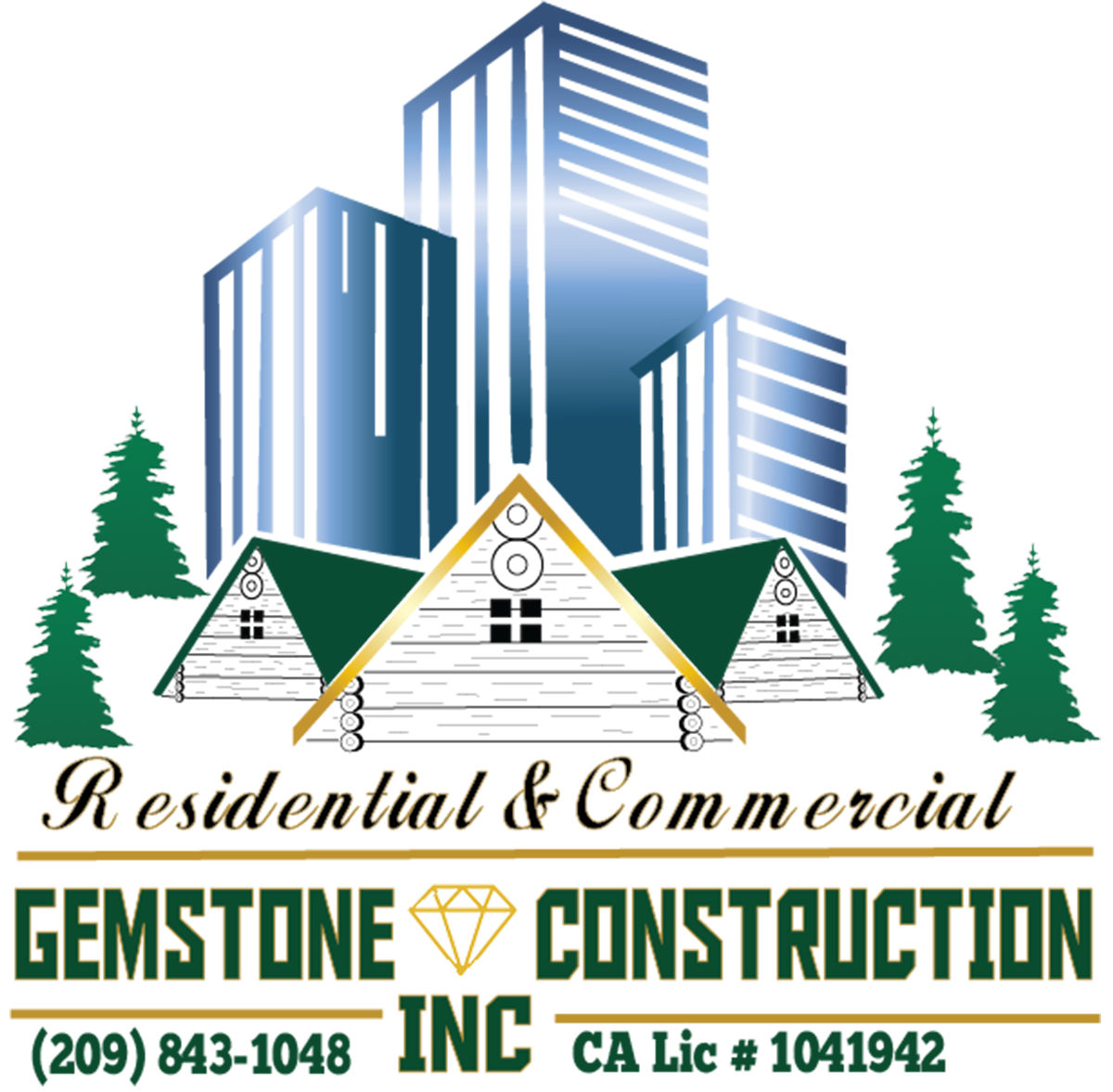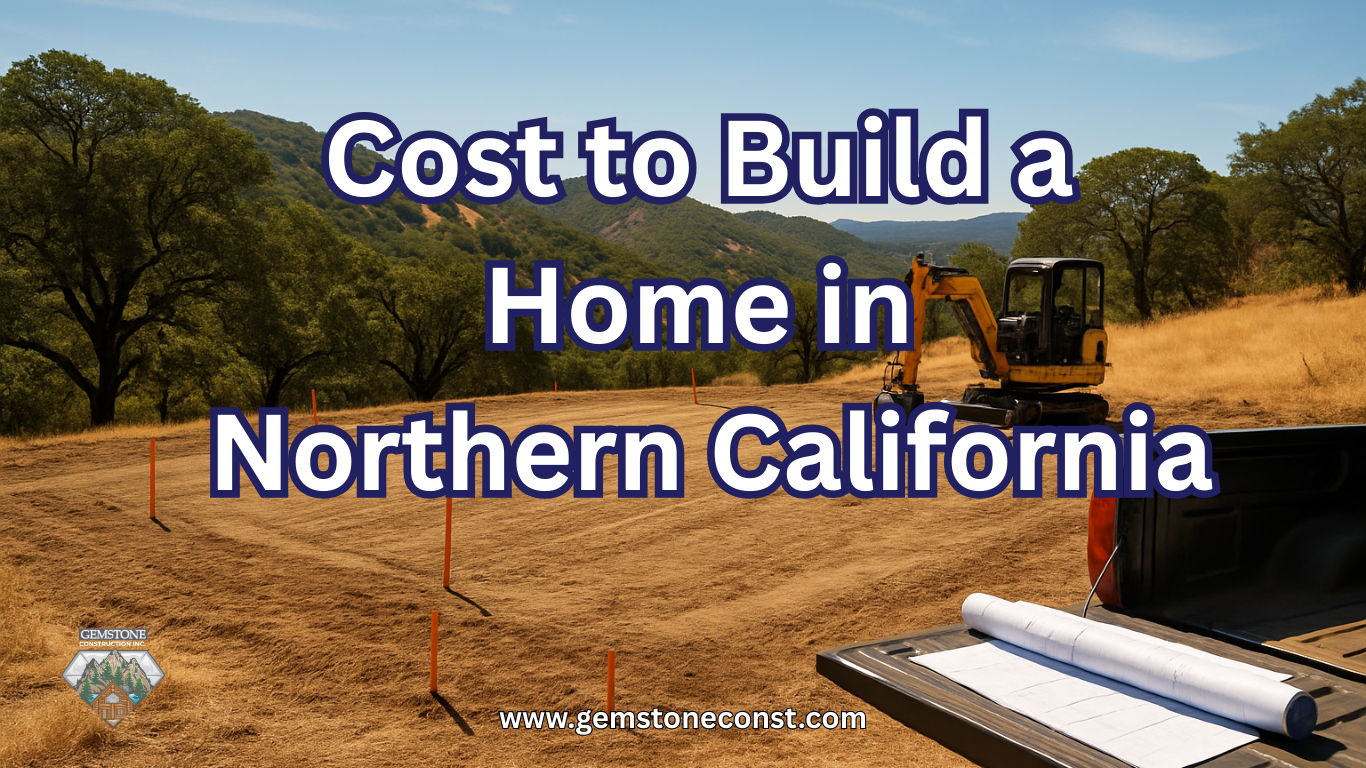GemStone Construction Blog
Are Log Homes More Expensive to Insure?
June 29, 2025 | Sacramento, CA USA
A handcrafted cabin smells like fresh pine and feels as solid as granite, yet many first-time builders hear scary stories about sky-high premiums. Insurers really study three levers: what it would cost to rebuild those thick-timber walls, how easily wildfire or falling trees could reach them, and whether your personal risk profile looks squeaky-clean. Tame those factors and the gap between a timber policy and a standard stick-frame policy shrinks faster than fresh sawdust settles. That truth matters even more if you already tightened debts while following the five financing paths we covered last week; lenders won’t wire the first draw until they see proof a cabin can be covered.
Budget clarity helps, too. The detailed cost spreadsheet you built while reading our cost & financing section—complete with Class A metal roofing, enclosed soffits, and ember-proof vents—doubles as an underwriting cheat sheet. When insurers see wildfire upgrades spelled out next to square-foot prices and footing specs, they can plug real numbers into their software instead of padding rates “just in case.” Add site upgrades like gravel turnarounds and widened access roads, and adjusters know fire trucks and lumber deliveries won’t bog down. The FAQs below answer the internet’s most-searched questions about log home insurance cost and give you action steps that turn premium shock into genuine peace of mind.
How much higher is the premium for a custom log home?
Most California carriers open quotes ten to twenty-five percent above a same-size frame house because rebuild software tags solid-log walls as specialty lumber. That bump, however, is negotiable. Install Class A metal roofing, ember-resistant vents, and enclosed soffits and underwriters often trim surcharges at the first renewal. Keeping a 100-foot gravel apron around the cabin scores more points, since fewer fuel ladders mean lower payout risk. Premium math ends up mirroring your cost spreadsheet: fewer corners and simpler rooflines equal smaller numbers across the board. A quick call to a local agent before final design tweaks often saves hundreds each year by confirming which features earn the biggest credits.
Deductible choice, claims history, and credit score push those numbers further. Raising the deductible from $1 000 to $2 500 can chop around ten percent off the bill, and bundling auto or umbrella coverage grabs another five to fifteen percent. Installing a monitored smoke, heat, and freeze alarm earns an extra break that pays for itself within a couple of billing cycles. The Insurance Information Institute confirms that “Class A roofing, ember-resistant vents, and a 100-foot defensible zone can cut wildfire surcharges by double-digit percentages.” Keep photo logs and receipts for every upgrade; proof talks louder than promises when renewal comes due.
Do wildfire zones make log cabins uninsurable in California?
High-hazard ZIP codes definitely thin the list of willing carriers, yet they rarely slam the door. Underwriters grade exposure by brush distance, slope steepness, and fire-department response time. A ridge-top cabin five miles from the nearest hydrant raises eyebrows, but the same ridge with metal gutters, tempered-glass windows, and a neat gravel perimeter often clears inspection after a short site visit. Detailed photos and line-item invoices turn a shaky “maybe” into a manageable quote. The California Department of Insurance states that homes completing its Wildfire Mitigation Checklist “remain eligible for standard coverage even in very-high-hazard zones.” Sharing that checklist with your agent speeds approval and locks in discounts.
When every private company still says no, the FAIR Plan stands as a backstop. FAIR supplies basic fire coverage, yet owners must stack a “Differences in Conditions” rider for theft and liability, typically costing more than a single mainstream policy. Prevention pays: many ignition-resistant features you planned while choosing the perfect floor plan pull fire-risk scores low enough for traditional carriers and keep total premiums below FAIR-plus-rider pricing. Staying proactive also protects resale value—future buyers often walk away when they see FAIR paperwork attached to a listing.
Can I lower my premium after construction wraps?
Inspections don’t end the day the county stamps your occupancy permit. Snap fresh photos once gutters, splash blocks, and landscaping are complete, then forward the gallery to your agent. Documented upgrades—spark-arrestor caps, widened gravel strips, or additional mesh screens—often shave ten to twenty percent off wildfire surcharges at the first annual review. Some companies re-score properties every three years, so keeping a running log of improvements turns paperwork into savings instead of chores. Regular upkeep matters, too: fresh stain and tight chinking repel moisture, bugs, and small claims that would otherwise ding your record.
Finances play a role as well. Paying the mortgage below eighty percent of appraised value can move owners from forced full-coverage tiers into custom replacement limits, a perk that dovetails with budgeting strategies in our financing post. Re-quoting every couple of years ensures the dwelling value hasn’t drifted higher than lumber warrants, preventing over-insuring. Over-coverage wastes premium dollars you could funnel into upgraded windows, backup power, or a screened porch—projects that protect comfort and boost equity without inviting rate hikes. When rates finally drop after you’ve built a spotless history, jump on a re-shop window and bank the savings for your next cabin adventure.
A solid policy plus smart construction keeps disasters from becoming distractions. Once your coverage is squared away—and your lender sees a clean insurance binder—Gemstone Construction can focus on what we do best: building dreams in California timber, one log at a time. Reach out, share your vision, and let’s transform blueprints into a ridge-top retreat that’s safe, stylish, and truly yours. Our crew will handle tight miters and level plates while you rest easy, knowing every board is protected. With financing, insurance, and cost planning lined up, there’s nothing left but the satisfying crack of a hammer and the scent of pine on move-in day.
About Gemstone Construction
Gemstone Construction is a premier custom home and commercial building contractor serving Northern California, including the Sacramento area. Specializing in
custom log homes,
luxury home builds,
residential metal building construction, commercial construction and
commercial metal building construction. We bring craftsmanship, attention to detail, and personalized service to every project. From designing dream homes to building cutting-edge commercial spaces, our dedicated team ensures that each build reflects our clients' unique vision and exceeds expectations. Trust Gemstone Construction to transform your ideas into reality with integrity and excellence.
Learn more about Gemstone Construction

Contact Information



